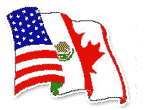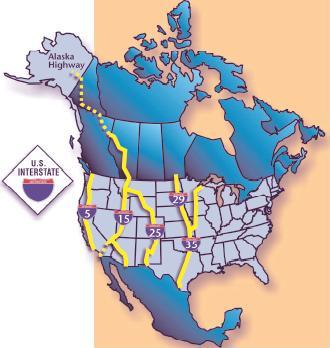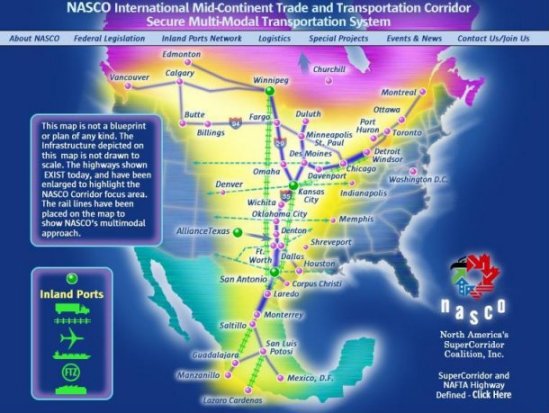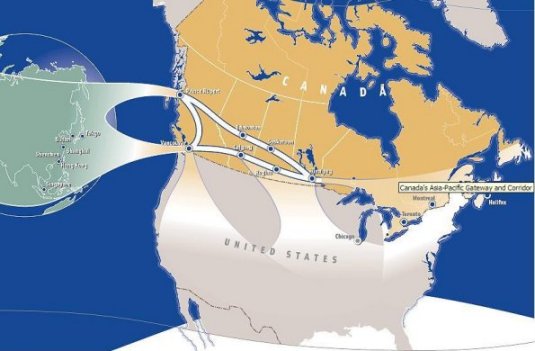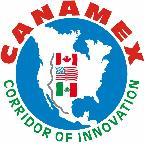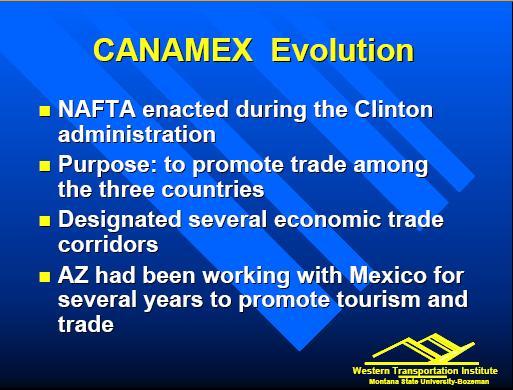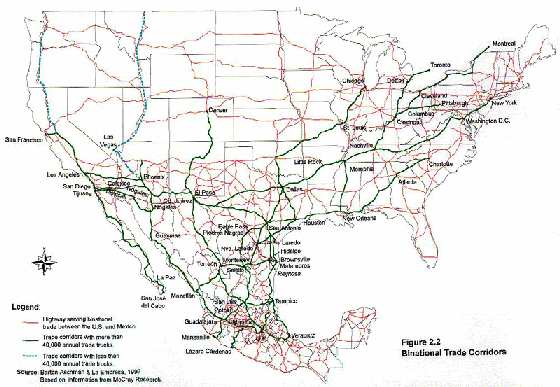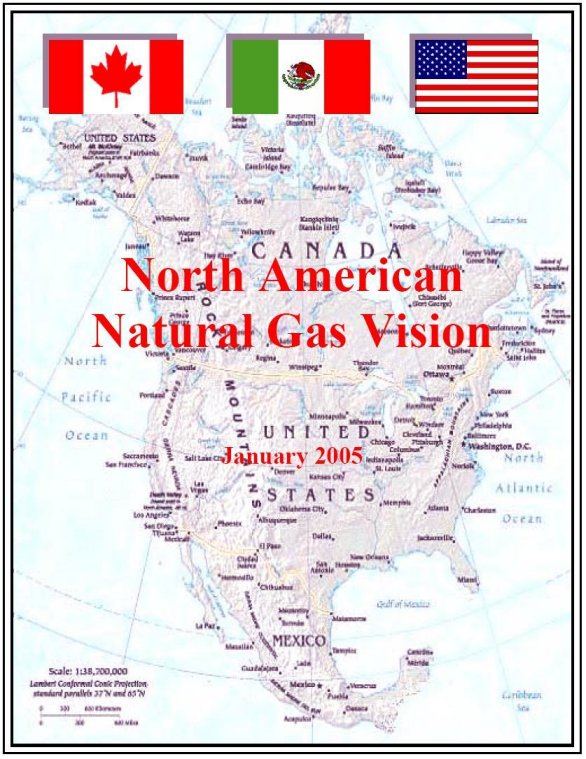NAFTA FLAG
Hemispheric Integration
The United States, being a member of the 1992 North American Free Trade Agreement (NAFTA), has committed itself to economic integration with both Canada and Mexico. Consequently, American highways have become one of the many stages in which free trade has manifested itself.
~~ Charles Cervantes, Pan American Health Organization - 1992 ~~
International Transportation Corridors
The most visible initiative in the hemispheric integration plan is the transportation system. An international system of superhighways is being built and/or upgraded from mostly existing interstate highways. Some of the corridors will be privatized, toll roads. The ostensible purpose of the highways is to transport imported goods from China through Canada and Mexico to the heart of our country and distributed beyond. These road systems will have 'inland ports' (KC Smart Port) also known as intermodal-commerce zones. They are similar in concept to the Communist Chinese foreign trade zones. There are several corridor routes going from Mexico to Canada.
The international corridor system has been implemented incrementally. The earliest reference found by this writer was:
Intermodal Surface Transportation Efficiency Act of 1991, signed into law by President Bush in December 1991 calling for a highway system to facilitate international commerce
International Highway Plan
U.S.-Mexico Joint Working Committee on Transportation Planning (JWC)
"Working Groups"

"Moving into Prosperity"
General Summary
Executive Summary
U.S. Dot
- Trans-Texas Corridor Overview
Trans-Texas
Corridor - Keep Texas Moving Org
NASCO
Sourcewatch - NASCO
Open Secrets - NASCO Lobbying Expenditures
These corridors effectively break up the United States. The Trans-Texas corridor is a major security breech - giving an open shot at America's heartland for quick and easy enemy penetration - especially for COMMUNIST China if they so choose.
Trans-Texas Corridor
"The proposed system will be a network of transportation corridors (routes) incorporating separate lanes for passenger vehicles and trucks, rail lines for high-speed passenger and freight rail, and a dedicated utility zone. Components in the system may incorporate existing and new highways, railways, and utility rights-of-way where practical. Up to 366 meters (1,200 feet) wide in some places, the corridor is designed to move people and freight faster and more safely through Texas, from Mexico to the Oklahoma border." Antonio Palacios
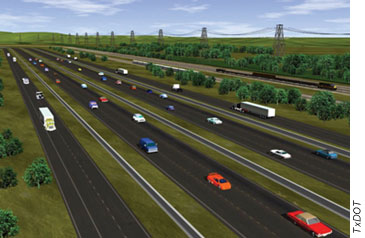
Artist's Rendition of Trans-Texas Corridor
Asia-Pacific Gateway and Corridor Initiative [pdf]
Notice that the destination cities line up with the Trans-Texas Corridor map and the CANAMEX map.
The “Shanghai to Chicago” Opportunity for Canada’s Asia-Pacific Gateway and Corridor
Asia-Pacific Gateway and Corridor
"Approved by Congress in 1993 and entered into force in 1994, the North American Free Trade Agreement was based on a simple premise -- that all of the countries in North America would be integrated into one free trade area."
US version
Canadian Version
CANAMEX
CANAMEX Corridor Coalition
Council of the Americas (Rockefeller) Background Report on
CANAMEX
Arizona DOT -
Introduction to Canamex
Arizona Governor - Executive Order 2003-19 - Amending and
Continuing 2001-5
CANAMEX - Smart Tourist System - Final Report
CANAMEX
Corridor.com
CANAMEX Trade Brochure
Testimony of Joan Claybrook, Public Citizen
during a hearing on Cross Border Truck
and Bus Operations.
"There is a fatal flaw in NAFTA. It
sets a deadline for
OPENING THE BORDER..."
Adobe pg 81 (p.77)
Congressional Hearing on Cross Border Truck and Bus Operations
CANAMEX - Safety & Security Issues - 2003
Idaho Governor Dirk Kempthorne's end-of-session tantrum over money for CANAMEX.
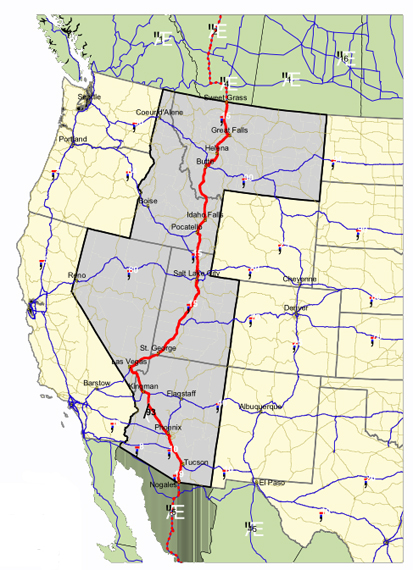
U.S. Federal Highway Administration
U.S. Mexico Binational Trade Corridors
Inland Ports and Foreign Trade Zones
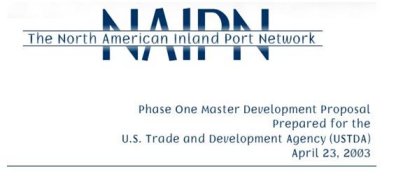
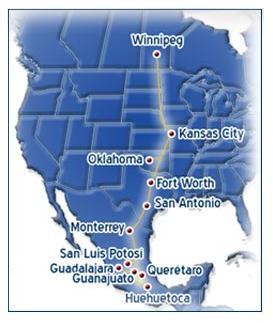
Integrated Infrastructure
Immediately after taking office, Dick Cheney convened secret energy meetings to formulate an energy policy. Judicial Watch was able to obtain the maps and some of the documentation from that meeting through exercise of the Freedom of Information Act (FOIA). They showed that Cheney and the people he was meeting with were dividing up the Iraqi Oil Fields - but they were also changing U.S. domestic energy policy. The following email was obtained by JW regarding natural gas policy:
Email from an Energy official, asking an energy industry lobbyist, "If you were King, or Il Duce, what would you include in a national energy policy, especially with respect to natural gas issues?"
Dept of Energy - Office of Policy & Intl. Affairs
